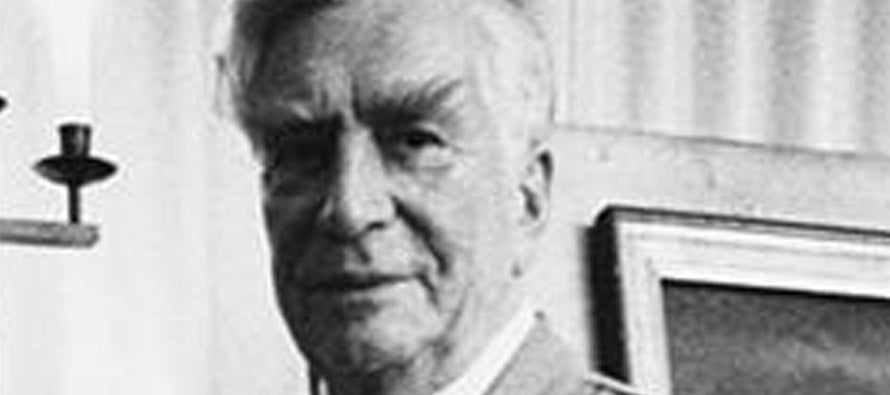
Werner Peiner. Official painter of the Third Reich.
Roberto ZampieriShare
Werner Peiner was born on July 20, 1897 and died on August 19, 1984. He was a German painter . He was first influenced by realism and later by New Objectivity, but would become known as one of the most talented official painters of the Third Reich.
The life of Werner Peiner
Peiner was born in Düsseldorf, the son of the merchant Joseph Peiner and his wife Sophia. Peiner grew up in Düsseldorf, where his father had become managing director of a wood wholesaler . He attended school until high school. When World War I broke out, he volunteered for the army with an Uhlan regiment. He was promoted to lieutenant and served on the Western Front.
After the war, Peiner studied at the Düsseldorf Art Academy , from 1919. He had initially taken private lessons from Wilhelm Döringer, a friend of his father.
In the 1920s he was a guest and painted with Katharina "Nette" Faymonville at the Burghotel zu Kronenburg in the Eifel . During this period he joined forces with Fritz Burmann and Richard Gessner to form the "Dreimann-Bund". In 1923 Peiner married Marie Therese "Resi" Lauffs and moved to Bonn to live with his in-laws. The couple had no children and in 1950 they adopted a cousin's orphaned daughter.

In mid-1925 Peiner opened a studio in Düsseldorf . During this period, through the mediation of his friends, the architect Emil Fahrenkamp and the entrepreneur Walter Kruspig, general director of Rhenania-Ossag since 1930, Peiner accepted artistic commissions for the design of churches, insurance and industrial buildings.
In 1931 Peiner settled in Kronenburg and began converting several houses in the historic center into a studio. Peiner played a key role in the construction of the sewer system in Kronenburg , as the sewage crossing the street bothered him. The street lamps he designed can still be found today in Kronenburg .
The Peiner style was closer to New Objectivity during the Weimar Republic, but he would accept the Third Reich and become one of its official artists . In 1933 he was appointed professor of monumental painting at the Düsseldorf Art Academy.
The painter of the Third Reich
He succeeded Heinrich Campendonk, who had been fired shortly before. Peiner owed his appointment not only to his acquaintance with the provisional director of the art academy, Julius Paul Junghanns, but probably also to his painting Deutsche Erde, or German Land, with which he supported the emerging Nazi ideology of blood and of the soil .

The painting was donated by the municipality of Mechernich to the Schleiden district administrator Josef Schramm. Schleiden NSDAP district leader Franz Binz personally handed it over to Adolf Hitler . According to Rolf Dettmann, a student of Peiner, Peiner's friendship with Kruspig may also have played a role.
Peiner had a tense relationship with Peter Grund, director of the Düsseldorf Academy from 1933/1934. With the consent of Hermann Göring, Peiner undertook a study trip to East Africa from February 1935, which Kruspig had organized and financed.
Through Kruspig's mediation, Peiner gained personal access to Göring. In a conversation with Göring on January 24, 1936, Peiner succeeded in realizing his wish to found his own academy. On March 23, 1936, the Minister for Art, Science and Popular Education issued a decree establishing the "Landakademie Kronenburg der Staatliche Kunstakademie Düsseldorf" .
As the Hermann Göring Master School for Painting, it became independent under Peiner's direction, in 1938. Peiner's students at Kronenburg included Rolf Dettmann, Heinz Hindorf, Hans Lohbeck, Willi Sitte, and Willy Wewer. Among other things, Peiner designed monumental tapestries for the Chancellery of the New Reich.
A nude of him even hung above Göring's bed in Carinhall . Peiner applied for admission to the NSDAP on 13 July 1937 and was admitted retroactively to 1 May. In the same year he became a member of the Prussian Academy of Arts. However, one of his paintings was confiscated as "degenerate art" . In 1940 he was appointed member of the Prussian State Council. In 1944, in the final phase of the Second World War, Adolf Hitler included him in the special list of the Twelve most important visual artists.
In 1944, Peiner moved with his wife to Gimborn in the Oberbergisches Land. After the war he was interned and all his assets were confiscated. In 1948 he purchased the dilapidated castle Haus Vorst in Leichlingen/Rhineland, which he restored over the years. He lived and worked there until his death in Leichlingen in 1984.
Like other German painters favored during the Third Reich , such as Conrad Hommel and Adolf Wissel, his reputation in Germany and the Western world remained clearly undermined after World War II: he nevertheless worked for the Ethiopian emperor Haile Selassie.
In recent decades he has been primarily a landscape architect.
